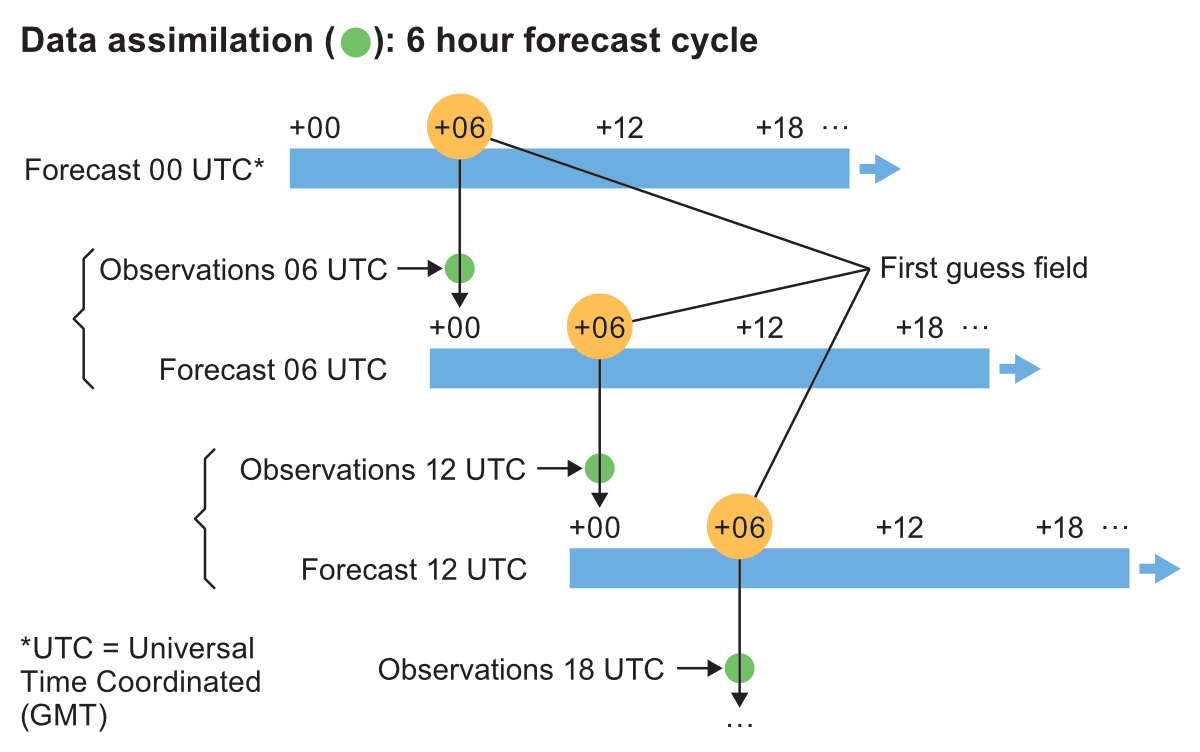Observations are the basis of it all
A necessary and important prerequisite for a weather forecast is to know the initial state of the atmosphere at the beginning of the forecast as accurately as possible. Consequently, much care has been devoted in weather model development to use all available observations to determine, as realistically as possible, the initial state of the forecast. These include surface observations obtained from international networks (SYNOP) and balloon soundings, as well as data from ships, drifting buoys and aircraft. Lately, the importance of weather radar and especially satellite observations has increased significantly.
However, even with the mass of information obtained from observations (a typical global numerical weather prediction model uses data from several tens of millions of observations per day), the initial state obtained purely from them is not accurate enough. Since the atmospheric motions are composed of patterns extending from turbulemt eddies of a few centimetres to planetary waves of thousands of kilometres, even today the observation network is still too sparse in both time and space to deliver an appropriate full picture of the state of the atmosphere.
The main aid comes from the weather model itself, because – within its accuracy – it contains a description of the whole atmosphere. The initial state is constructed by starting from some earlier forecast for the desired time instance and correcting it with the latest observations, taking into account the inaccuracies and uncertainties in both of these data sources. In another words, one thus prevents the model from drifting away from the real atmospheric state.

This process is called data assimilation and the mathematical method used presently is variational calculation. It is a very complicated and slow process, which consumes a lot of computer resources. In fact, with short-term forecasts, data assimilation can take more time than the forecast itself.
Operational weather forecasting thus consists of a continuous chain of forecasts, each partly based on the previous one. One of the challenges of the operational forecasting is to keep this chain unbroken.
2.9.2021
